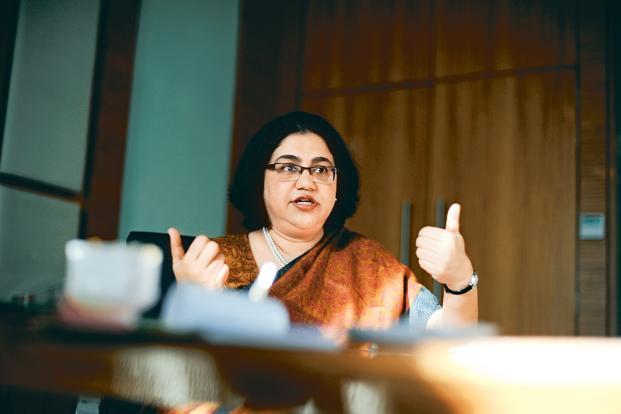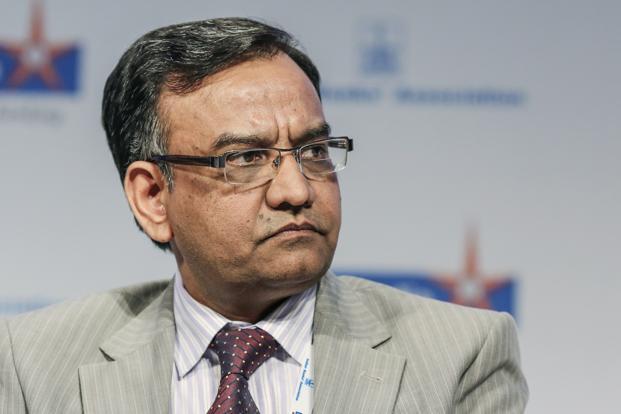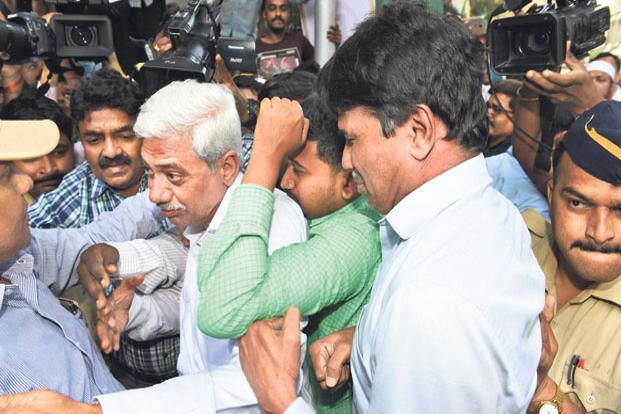Crisil Ltd,India’s oldest rating agency, doesn’t call itself a rating agency any more. Its chief executive and managing director Roopa Kudva prefers to call Crisil a global analytical company providing ratings, research, risk and policy advisory services as rating accounts for just one-third of its business. The rating business roughly accounts for one-third of its revenue, and the contribution of overseas and domestic operations is 50:50.
In an interview, Kudva, 49, talks about credibility, rating shopping, market share, competition, why Crisil’s rating board has only one outsider, and the past, present and the future of the company that has completed 25 years since its incorporation in January 1987. Edited excerpts:
You have brought out ‘Doing What is Right: The Crisil Story’ to celebrate your quarter century existence. It talks about a young lady, in her late 20s, who barged into the cabin of then Crisil head Pradip Shah in 1992, after reading his interview in a business magazine. She wanted a job in Bangalore where Crisil was expanding and got it in 20 minutes. How has been the journey?
Amazing. Unlike the kids of today, we were far more easy-going and it never even occurred to me to be overawed by the thought of Shah. It has been an incredible 25 years for India, and people like us who entered the workforce at that time have benefited tremendously, particularly from the opportunities that the financial services sector had to offer.
Crisil, the book says, is a Bobby Fischer in the research and rating world. What does it mean?
We have a tradition of innovation and we take a lot of pride in the fact that every new product or every new service in the areas in which we operate—it is almost a zealous attitude—we have to be first to market with that. Way back in 1992, Crisil was the first agency to rate a bank. Similarly, if you look at our research business outside India, we acquired Irevna (a start-up in Argentina) and that pioneered the concept of equity research offshoring. We were the first to introduce the idea of offshoring in trading and risk management functions in global investment banks. The desire to be first in the market is a part of Crisil’s DNA.
First Shah, then R. Ravimohan, and since July 2007 you have been at the helm. How are you different from your predecessors?
No one except for Shah and (Narayanan) Vaghul could have set up Crisil. They had the brilliance to make a concept acceptable in India that really did not have any economic merit. When Crisil was launched, the interest rates were regulated and so whether you get a triple-A or a double-B, you all paid the same interest rates.
Ravimohan instilled a sense of desire for growth; introduced a lot of new practices in terms of investor communications and business development. Both Shah and Ravimohan have left their stamp on this company in terms of it being an intellectual powerhouse, its reputation, credibility and analytical rigour.
What about you?
My focus has been to become more relevant to India by expanding the market for ratings. In January 2008, Crisil had ratings on about 450 top companies, but if we have to be relevant to the Indian economy in a more meaningful way, we should expand the population of rated agencies and reach the smaller firms as well. Which is why we have introduced rating for small and medium enterprises (SMEs) and we rate about 35,000 firms today.
I have also globalization on my agenda. While we started off in the equity offshoring business in a small way with the acquisition of Irevna, not only have we grown that piece, but have also expanded into cutting edge areas like analytics in trading and risk management. We have recently acquired Coalition a few months ago—a very sophisticated high-end analytics UK-based company providing revenue and productivity benchmarking on global investment banks. That gives an opportunity to offer proprietary research outside India.
The UK and the US contribute about 50% of your revenue.
That’s correct. We have achieved the balance in our portfolio that we wanted to. Within India, ratings is down to one-third of our revenue. This is part of the targeted plan and from here on we are looking at maintaining this mix.
Why do you call yourself a rating agency then?
Today, we call ourselves a global analytical company providing ratings, research, risk and policy advisory services.
The rationale of diversifying beyond ratings was to make sure we did not become overly dependent on our ratings clients for business, and could maintain analytical independence and derisk ourselves.
Often you talk about rating shopping.
Unlike in the West, where the rating agencies are being regulated only now in the last four-five years, India has been one of the few countries to introduce regulations for the rating agencies way back in 1999. Also, India had the benefit of not having complex structured products like the Western markets had. Yet, another reason why the rating agencies have served the markets well is the transparency they have introduced. All the rating agencies put together; India has ratings on about 20,000 firms, which makes it a country with the largest rated population anywhere in the world.
As an industry, we have done a good job. But rating shopping exists from time to time. Particularly every time we see a new rating agency coming into the picture, we do see a spike in rating shopping. But has it gone to an extent where it has become a matter of serious concern? I don’t think so.
Rating industry is one industry where constantly over time every player has to raise and tighten its standards in response to the growing environment. Post Lehman, there is increasing volatility in markets both globally and in India. It means you cannot afford to sit back and look at a company only once a year. The surveillance of your ratings has to be continuous.
Don’t you cut your fees for increasing market share?
There is no doubt that price competition in the rating industry is intense, but rating agencies have an inherent incentive to remain credible because what they are selling is their credibility. The investors and lenders also have a very big role to play. Our message to the markets is that: Please do not equate all rating agencies. A double-A rating in every agency is not the same. It is very important for investors as the primary users of ratings to have a relative evaluation between rating agencies and then go with a rating agency who they believe is the most credible.
So you claim to be the most credible?
What is the report card of a rating agency? There are many ways to analyse a rating agency, but the simplest way is actually to see default and transition statistics. If we are doing a good job, it means that a triple-A rating should be more stable than a double-A and double-A should be more stable than a single-A. Similarly, default rate in a higher rating should be low. Crisil’s default rates across categories are low and Crisil’s transition rates across categories are lower.
What is your market share?
Crisil has over 50% market share. We have rating outstanding on 10,500 companies. If you put together ratings done by the competitors, they together rate another 10,500 firms. The companies that have dual ratings are just about 300-400.
There have been instances of companies refusing to accept ratings and even moving court…
The first time we rate a company, it has a choice to accept or not to accept the rating. Having accepted a rating, the regulations require a rating agency to monitor the rating over the life of the loan or bond in the interest of the investor. There are instances of a rating agency wanting to downgrade the companies and the rated firms did not want to accept it. But under law, rating agencies are obligated to keep the ratings alive or else the investors will be left high and dry.
There are instances of Crisil giving high ratings to companies which they did not deserve.
I can’t say about individual companies, but our goal is to avoid multi-notch downgrades. You cannot avoid rating changes. Because of changes in environment, ratings will go up and come down. If you look at our portfolio of 10,500 companies, we have done fairly well. Have there been instances of steep multi-notch changes? There have been a handful of such instances in our 25 years of history and there are reasons behind that. One is the inability of stated funding plans to fructify. Two is event risk in terms of acquisition—you do a sudden major acquisition which completely vitiates your balance sheet and financial strength and may lead to multi-notch downgrades. Ideally, if a rating agency is monitoring a portfolio it should not happen, but if there is a need for a multi-notch downgrade, Crisil will do it rather than try and manage a step-by-step transition.
Why do you promote companies’ equity issues after grading them?
We don’t. We do investor meets where the company management makes a presentation and Crisil analysts also make a presentation on why a particular rating has been assigned. This is a part of our normal investor education.
Last year, Crisil had assigned top investment grade to Tata Power Co. Ltd’s Rs. 1,500 crore perpetual debentures, while another rating agency sounded a warning on corporate perpetual bonds saying they should be treated with considerable caution by investors.
We do not believe in a formula-based approach to ratings. For corporate sector, Crisil has ratings outstanding on perpetual securities of two issuers—Tata Power Co. and Gujarat State Petroleum Corp. Ltd. In the first instance, the ratings are equated with the vanilla instrument ratings. In the second one, the rating for the perpetual is one notch lower.
Crisil’s approach in rating perpetual debentures involves analysis of specific features of the instrument, credit profile and business stability of the issuer, and the management intent. On the basis of this, the decision with respect to rating differential from the vanilla instrument is decided. We believe this helps in better differentiation of the credit profiles across a range of instruments and issuers.
Often Indian rating agencies blame the auditors for not representing the right picture…
Do we go by the audited numbers? Yes, we do as we are not auditors. But we do not leave it at this. The rating agencies can do a lot of work based on audited numbers, which can give you a reasonably good feel to figure out if the numbers are accurate or not. Obviously, there could be exceptions where there is a complete fraud which you cannot catch on.
You outsourced SME ratings to chartered accountancy firms. How do you ensure the hygiene?
If you have to reach out and make an impact, there are 20-25 million small enterprises in India and we have started scratching the surface with 3,500 employees. You need to expand reach and still maintain the quality of analysis. We figured a nice way. First we have a business development network spread out all over the country (we do with a retainer network) and we take the help of business associates for basic data collection. For core analytical activity, which includes the analysis and discussion with the management, they are all done by our in-house team in every single case. For data collection also, we have our set of practices to ensure quality like mystery shopping.
Earlier, you had more representations on your rating committee, but now there is only one outsider.
When we started, we were a fledgling company. We did not have enough experience within the company. So, at that point of time, our rating committee was entirely composed of people from outside. If you get people from outside on the rating committee, it is very important to ensure that the individuals do not have a conflict of interest. Historically, people on our rating committee have had an impeccable reputation and high credibility, and all have retired. Our people today have about 20-21 years of credit analytics experience. With the richness of our rated portfolio and internal people getting that depth of analytical experience, we feel it is only right to give them an opportunity to be members of the rating committee.
It is also difficult to go out in the market and find people who have no conflict of interest. It is a combination of both.
Doesn’t this affect your credibility?
I think it is the opposite. We have serious instructions for our employees on what they can or cannot do. Any senior person at Crisil is not allowed to hold any equity shares. If there are outsiders, you cannot impose these instructions.
Where do you smell the next big business?
SME will be a very big growth engine in India. Outside India, we see a huge opportunity in the fact that the banking industry is being subject to a whole lot of new regulations. That will be a big driver for Crisil’s growth outside India. We have put together a team of people working out of the Buenos Aires research centre. They are from India, Pakistan, Cameroon, Venezuela, Italy and the US. This team is helping the global banks on their new quant analysis.
Within India, one of the new things that we are exploring is as we rate so many SMES, we would like to extract additional insights from a large amount of data that is available to us. As we get a deeper understanding of the industry, we can build some kind of indices.
I have a feeling something very big may come up, but it is too early to comment.
How do you view competition?
I keep saying competition is here to stay. Our philosophy has always been to compete on the basis of analytical ability. In 1998-99, when we started downgrading companies, our market share went down from 70% to less than 40%. Then we had a dot-com bubble burst. Our share price went down from Rs.800 to Rs.100. Everybody asked why are you downgrading the companies? We took a stand saying that ultimately we are here for credibility and the market realized it. People came back to us and we built our market share.
Did your rival Care Ltd approach you for grading its initial public offer (IPO)?
No, they did not get an IPO grading from us. They got an exemption from grading from the regulator. In general, I would say that it is important for rating agencies to be as transparent as possible. Globally, rating agencies do rate each others’ debt.
If you were to assign a rating to Crisil, what would it be?
Shah was asked this question years ago. He said ‘AA+, if not AAA’. I think that answer holds even today.



